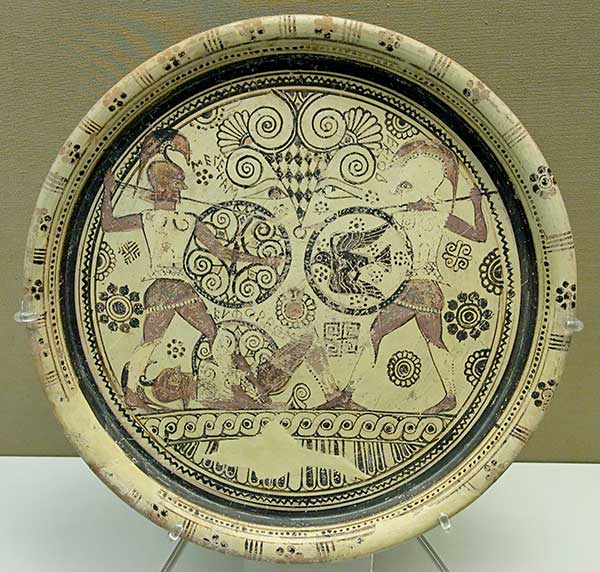The story of the wandering soul of Pythagoras
Ultimately, this story is taken from the Trojan Epic Cycle. As Menelaos is explicitly told to have been on his way back from Troy to Sparta, this act of personal eusebeia was integrated into the Nostoi, the epics of the Greek heroes‘returning’ home. It was especially Agamemnon’s and Menelaos’ journey that they imagined. [3] The Nostoi, as the entire Epic Cycle, were most probably written down in the later seventh or sixth century BCE, using pre-Homeric mythological traditions. [4] Yet, of course these traditions were mixed with later additions, first of all because the authority of the epics could ennoble local myths. It is therefore not clear how old the story of Menelaos visiting Didyma really is. From the point of view of mythological chronology, it follows the story, given by Pausanias, that Herakles founded the ash-altar of Apollo in Didyma. [5] This theme may also stem from a tradition, integrated into the Epic Cycle and being even pre-Homeric, as Homer himself is relating to Herakles, travelling around in the eastern Aegean including Kos near Miletos, fighting the Amazons and even conquering Troy one generation before the Trojan War. [6] It can be combined with another story, that of Achilles on his way to Troy, killing the Lelegian prince Trambelos in Miletos at a place called Achilleios Krene. [7]
By ignoring the Indo-European traditions, also present in the mixed Greek-Karian culture of his hometown Halikarnassos, [13] and in favour of his belief in the incredible high age of the Egyptian culture and its paradigmatic role for all other cultures, [14] Herodotus is explicitly contradicting “some of the Greeks, early and late”, who “used this doctrine as if it were their own.” He continues: “I know their names, but do not here record them.” With this remark he is probably hinting at Pythagoras, the Pythagoreans and Orphics. [15]
πλοχμοίθ’.
“With blood bedewed was his hair, looking like charites,
with the curls and all.”
Moreover, at the same time Pythagoras traced himself back to the Argonaut Ankaios, one of the mythical founders of Samos. [25] These two contradicting genealogies of Pythagoras, again proving the remarkable ‘memoryʼ of his soul, [26] were obviously not a problem for the Milesians, when presenting the shield of Euphorbos. It was more problematic that in the Iliad Menelaos tried to take the “glorious weapons” (κλυτὰ τεύχεα) of Euphorbos (the shield is never mentioned explicitly), but was hindered because of the will of Apollo, who sent Hektor to rescue them. [27]
The shield of Euphorbos in Didyma — and Argos
The shield of Achilles as depiction of the kosmos
Homerʼs discoid map of the world was at the height of contemporary knowledge and remained influential until Eratosthenes and others discovered the spherical shape of the earth, and the right astronomical order of the three celestial bodies, moon, sun and stars. [76] Already Anaximenes and Herodotus critisized the map [77] and Krates of Mallos, librarian of Pergamon (second century BCE), corrected the Homeric view of the world, opposing the traditionalist Aristarchus of Alexandria. [78] Vergil composed accordingly: the shield of Aeneas is thought of as not being discoid any more but spherical, the imago mundi turned into an up-to-date globe. [79]
Euphorbos—Pythagoras, memory–wisdom, soul—kosmos
Bibliography
Captions and Credits

